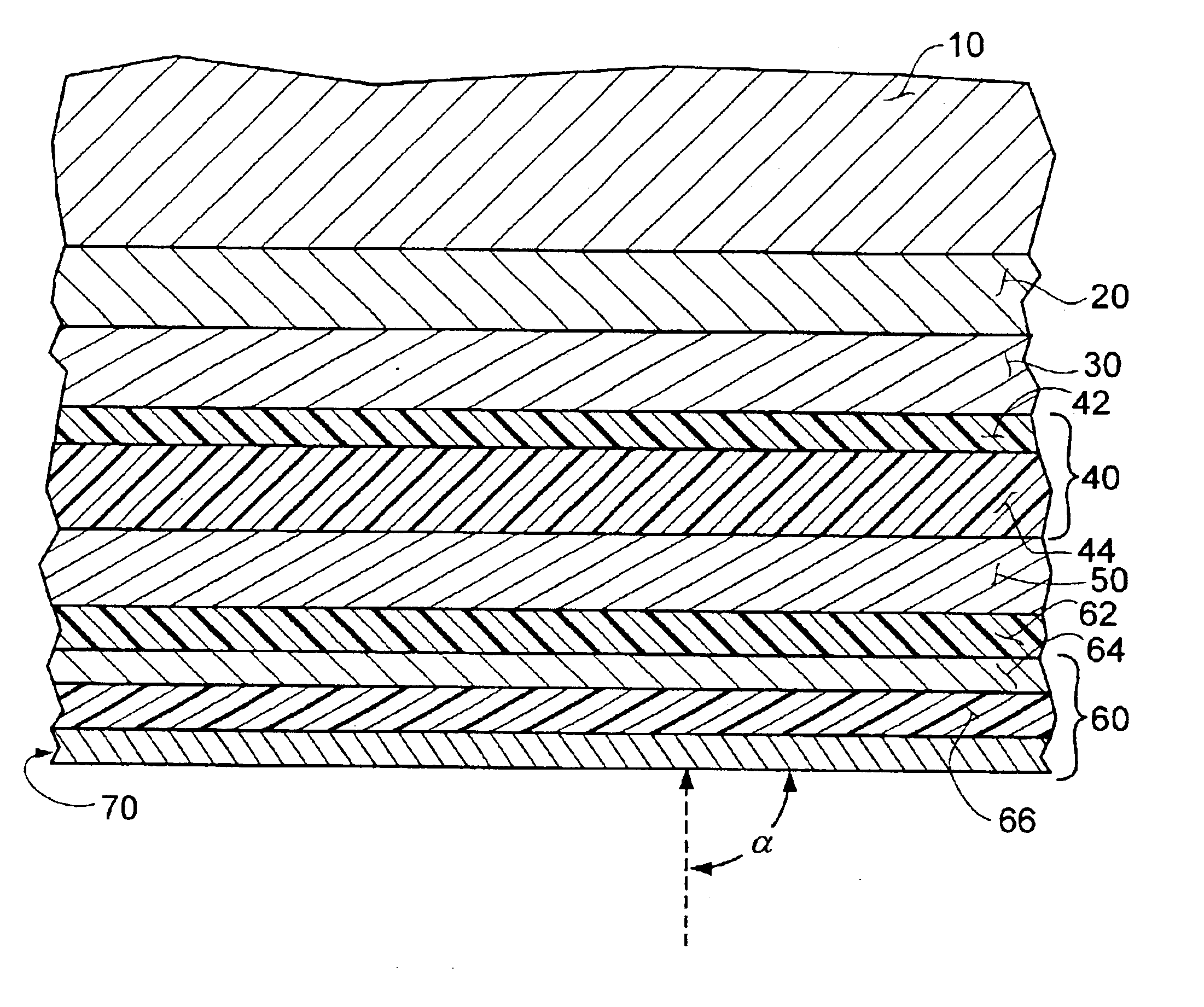High transmittance, low emissivity coatings for substrates
a substrate and low emissivity technology, applied in the direction of superimposed coating process, lighting and heating apparatus, instruments, etc., can solve the problems of unsuitable protective overcoat, certain other oxides simply lack the durability to be used as protective overcoats, and film stacks are often subjected to relatively harsh conditions, so as to achieve low emissivity and reduce materials and energy. , the effect of high transmittan
- Summary
- Abstract
- Description
- Claims
- Application Information
AI Technical Summary
Benefits of technology
Problems solved by technology
Method used
Image
Examples
Embodiment Construction
A schematic representation of one preferred embodiment of a high transmittance, low emissivity film of the invention is shown in FIG. 1. The film stack of the invention is applied over a substrate 10, which may be of any desired material. It is contemplated that a film stack of the invention, though, will be applied to a substantially transparent substrate, such as glass or a clear plastic material. The present invention has particular utility in coating glass panes for use as windows in architectural or automobile-related applications.
A base coat 20 of a metal oxide of the invention is applied over the substrate. It is contemplated that the metal oxide of this base coat 20 be at least about 150 Å thick, but should be no more than about 275 Å thick. A thickness of approximately 220 Å is preferred for this layer.
Metal oxide layers analogous to base coat 20 of the present invention employ known metal oxides such as titanium oxide, hafnium oxide, zirconium oxide, zinc oxide, tin oxide,...
PUM
| Property | Measurement | Unit |
|---|---|---|
| Angle | aaaaa | aaaaa |
| Thickness | aaaaa | aaaaa |
| Electrical resistance | aaaaa | aaaaa |
Abstract
Description
Claims
Application Information
 Login to View More
Login to View More - R&D
- Intellectual Property
- Life Sciences
- Materials
- Tech Scout
- Unparalleled Data Quality
- Higher Quality Content
- 60% Fewer Hallucinations
Browse by: Latest US Patents, China's latest patents, Technical Efficacy Thesaurus, Application Domain, Technology Topic, Popular Technical Reports.
© 2025 PatSnap. All rights reserved.Legal|Privacy policy|Modern Slavery Act Transparency Statement|Sitemap|About US| Contact US: help@patsnap.com


